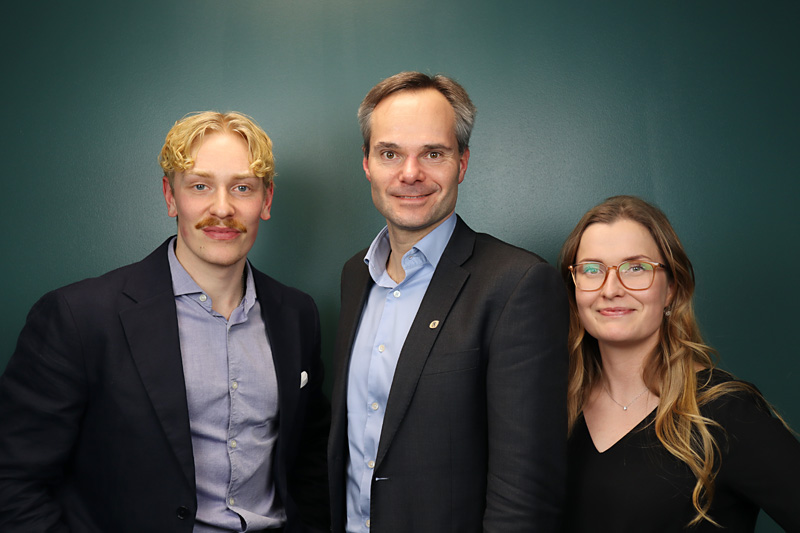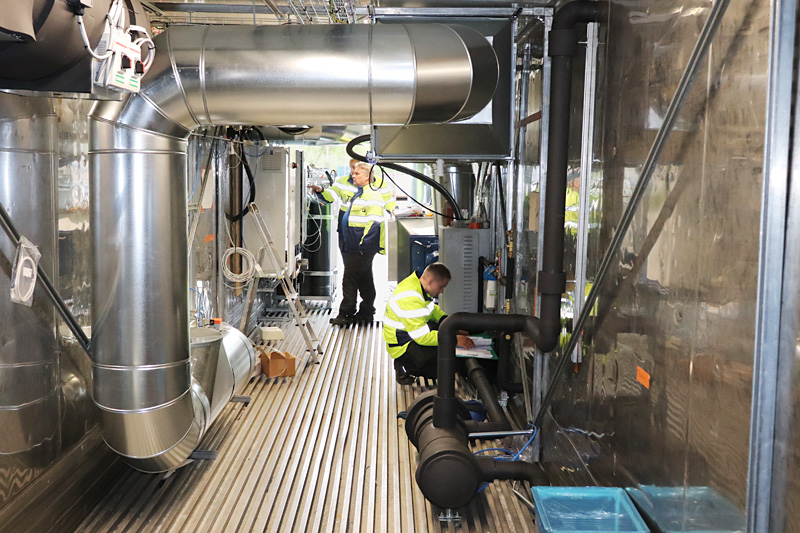Carbon dioxide capture helps Finland achieve climate goals

The Finnish government has identified the capture of wood-derived carbon dioxide by forestry and energy companies as a key goal in reducing emissions. Kai Mykkänen, Minister of Climate and the Environment together with Fimpec’s Maiju Hirvikallio and Eelis Lähdemäki, discussed the significance of carbon dioxide capture and the opportunities it presents.
This is a summary of the 7th episode of Fimpec’s “Kumppanit” podcast which discussed the opportunities of carbon dioxide capture. “Kumppanit” podcast is hosted by Maiju Hirvikallio, Fimpec’s Director of Communications & Marketing. The podcast is available for listening in Finnish on Spotify.
The capture of biogenic, or biomass-derived, carbon dioxide resulting from the combustion or decay of wood offers Finland a unique opportunity to reduce carbon dioxide emissions and create new business opportunities. Minister of Climate and the Environment Kai Mykkänen emphasizes the importance and uniqueness of this opportunity due to the extensive use of wood in the forestry industry and bioenergy plants in Finland.
“It offers us a fantastic opportunity to become a country that absorbs more carbon dioxide than it releases into the atmosphere. There is significant potential to reduce emissions and, for example, combine captured carbon dioxide with clean electricity to produce various products, such as synthetic cement, different building materials, and even synthetic fuels,” he states.
Biogenic carbon dioxide is particularly valuable because during growth trees absorb carbon dioxide from the atmosphere. When wood is burned, carbon dioxide is released into the air. If captured and stored, it creates a so-called negative emission or a technical carbon sink. Capturing fossil carbon, on the other hand, only reduces emissions without creating negative emissions.
Carbon dioxide capture is a crucial complementary element in reducing climate emissions
The government’s plans emphasize the role of capturing biogenic carbon dioxide in achieving climate goals. Mykkänen states that the government is committed to ensuring that Finland moves towards the goal of being carbon-neutral by the mid-2030s through sensible means.
“We are on a good path to reducing emissions in industry, housing, transportation, and agriculture. By the end of this decade, emissions will be about 60 percent less than in the early 2000s, and emissions will decrease even faster than expected as industry and energy production move away from combustion.”
“At the same time, we face challenges because new calculations constantly undermine estimates of our forests’ and soil’s carbon sinks. We cannot assume that we will significantly restrict the economic use of wood, as it would be very difficult for assets, employment, and the balanced development of Finland,” he explains.
In this equation, carbon dioxide capture is a crucial complementary element, especially on an industrial and energy production scale.
“The government’s most radical climate policy is that it will introduce measures to ensure that carbon dioxide emissions from major industrial and energy production point sources end by the mid-2030s. This practically means finding ways to plug chimneys in large facilities over the next 12 years,” Mykkänen outlines.
The targets specifically focus on the capture of biogenic carbon dioxide. According to Mykkänen, this emphasis is somewhat self-evident due to the trend in Finland where the use of fossil fuels in electricity and heat production, as well as in industrial processes, is rapidly diminishing over the next decade.
“Our electricity production is already about 95 percent fossil-free, district heating production is increasingly moving away from fossil fuels, and industry is aiming to move away from fossil use. So, in the next decade, we won’t use a lot of fossil fuels, but there will be significant by-product combustion in the forest industry and bioenergy production. This can be captured and utilized, thus counted as negative emissions.”
Government measures provide a boost to development
Mykkänen states that the government is prepared to assist in initiating what is considered a crucial development. However, in the long term, it should be market-driven.
“We reduce on almost everything, but carbon dioxide capture is one of the few things we invest in. We have set aside assets to launch an auction for negative emissions or a similar cost-effective mechanism to support the first projects. These can also be financed through the EU’s recovery package, REPowerEU, and large demonstration project investment grants for new energy technologies.”
“At the same time, I emphasize that this does not mean the state is buying negative emissions. Instead, there must be a market incentive to support development. This way, product value is created for biogenic emissions by replacing the reduction of emission rights or the high emission costs of the burden-sharing sector.”
He adds that carbon dioxide capture could become a merit of social acceptability, especially for the forest industry and bioenergy power plants.
“The forest industry, often seen as a player that reduces carbon sinks too much, could be the sector that says we can turn the Nordic balance sheet carbon-negative by capturing carbon dioxide that would otherwise decay and return to the atmosphere and then circulate in the forest. This will also become a competitiveness issue.”
According to Mykkänen, another aspect is that solutions arising from carbon dioxide capture can be technologically replicated in countries where capturing fossil carbon dioxide is challenging. This opens up vast markets in China and India for the foreseeable future.
Research, product development, and regulation
Mykkänen further notes that achieving the goals of carbon dioxide capture requires the technology to become cheaper and applications to be productized. Regulation also plays a role in development.
“It can be significant if, for example, the revised building law gradually introduces a decreasing limit for the life cycle carbon footprint of a building. Then there will be demand for building materials based on recycled carbon dioxide. The same works on the fuel side. On the one hand, if it is clear that it would be socially sensible and reasonably affordable to capture carbon dioxide extensively in facilities of a certain size, we need to consider whether we need regulation to encourage this with sufficiently long transition periods,” he assesses.
Fimpec’s Eelis Lähdemäki points out that in this context, the regulation should be sufficiently straightforward for operators. Mykkänen agrees with the statement.
“Regulation must be straightforward. At the same time, I hope it is as technologically neutral as possible. We should avoid highlighting trivialities and the mistakes made, for example, in the regulation of hydrogen.”
Mykkänen continues that development is also facilitated by investing in research and product development. He reminds that in 2024, the government will allocate about 300 million euros more than in 2023 for this purpose, and by the end of the electoral term, the total sum will increase by over a billion euros.
“When the starting point is that companies allocate two euros for every euro invested by society, we are talking about an annual additional flow of three billion euros for product development and research. This should lead to innovations, and probably will. A bigger challenge is how we can ensure that Finland has good conditions for the commercialization phase and pilot projects in a suitable way at this point.”
Now is the time for bold solutions
In conclusion, Mykkänen states that what is needed now is decisive and appropriate courage, not despair.
“It’s easy for me to find five reasons why things could go wrong. Risks must be recognized and taken into account, but if we want to build the building blocks of the future, we usually have to take bold steps.”
“Many messages come from various quarters that not enough is being done to slow down climate change. I share the concern about climate change and biodiversity loss, but the despair that we are heading towards a dead end is, in my opinion, disproportionate. We have challenges, and it would be better if things were done faster rather than slower, because it is expensive to fix things afterwards. But I believe that humanity is resourceful and that this course will turn around.”
“Kumppanit” podcast page (in Finnish)


